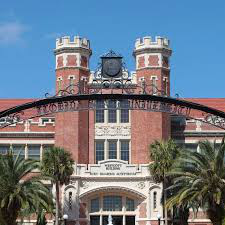Speaker
Description
The quark-gluon plasma (QGP) is a deconfined state of nuclear matter made of free quarks and gluons, created under high temperature or energy density. Charmonia, bound states of charm and anti-charm quarks, are very special probes of the deconfined medium. $J/\psi$, the vector meson ground state of the charmonium family is abundantly produced at the LHC energies but its production mechanism is still not fully understood, already in elementary proton-proton collisions. In heavy-ion collisions, heavy quarks are produced at the early stages of the collision, therefore they can experience the full collision history, including the QGP phase, providing some insights on the created medium. In particular, $J/\psi$ mesons can experience dissociation inside the QGP as well as recombination, the latter happening at the LHC energies due to the high $c\overline{c}$ production cross section. In addition, the initial geometrical asymmetry of the heavy ion collision and the hydrodynamical aspects of the hot medium can induce a non-zero $J/\psi$ elliptic flow, as they can inherit the flow of the charm quarks through the recombination. Disentangling the prompt and non-prompt $J/\psi$ production, the latter arising from the decays of beauty hadrons, is crucial to understand the different impact of the medium on the bottom and charm quarks. In p--Pb collisions, charmonium measurements are used as reference to study Cold Nuclear Matter effects. Finally, charmonium measurements in high multiplicity pp and p--Pb collisions can bring further insight on heavy quark collectivity in small systems and charmonium production mechanisms via multiple parton interactions.
This talk will present the latest results on $J/\psi$ production at forward and midrapidity in ALICE using Run 2 data. We will present the inclusive, prompt and non-prompt $J/\psi$ production and the inclusive $J/\psi$ elliptic flow measurements in pp, p--Pb and Pb--Pb collisions. Finally, we will discuss the measurements of double $J/\psi$ production in pp collisions, and the $J/\psi$ production as a function of charged particle multiplicity in pp and p--Pb collisions. ALICE results will be compared to results from other experiments and to theoretical models.
| speaker affiliation | IJCLab |
|---|

